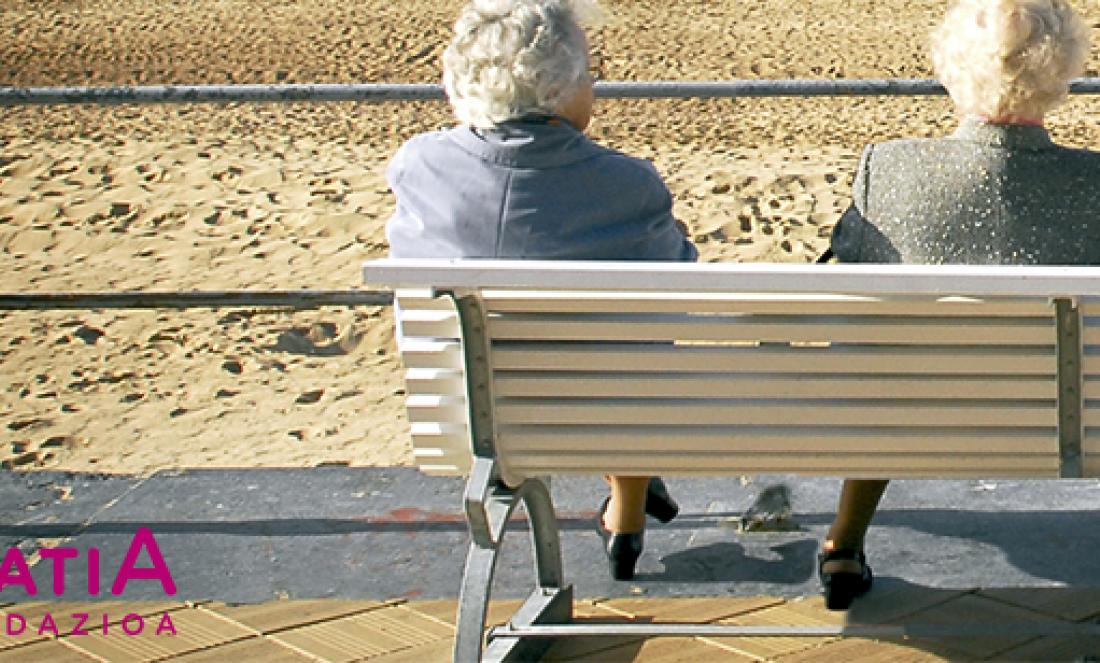
Urinary incontinence a frequently forgotten giant of Geriatrics
Urinary incontinence increases with age and has a great impact on a personal and social level, altering a person's quality of life, isolating them socially and greatly diminishing their self-esteem and autonomy. It is a source of sleep disorders and especially of falls, fractures and hospitalisation. However, it is not given the same importance as other syndromes, the cause is not adequately studied and treatment is often palliative with absorbent measures, which is why the professionals themselves, the families and those affected see it as something that is typical of age.
The article by Gibson and Wagg(*) evaluates the new horizons of incontinence from a physiopathological and therapeutic point of view, opening up a source of knowledge in an aspect that is very prevalent in the elderly:
- With regard to the neurological control of continence by functional neuroimaging studies, the relevance of structures such as the periaqueductal grey substance, the pontine tegment in the bladder filling phase or the orbitofrontal region, the insula that controls the suppression of urgency, is appreciated. Lesions of the periventricular or subcortical white matter are a target for adequate control of vascular risk factors, but there is no evidence that greater control of these factors reduces incontinence. Likewise, different neurotransmitters such as GABA, opiates, adenosine and dopamine play a significant role in the control of continence, as can be seen in Parkinson's patients where alterations in adenosine can condition early urine leakage.
- More than an inert tissue, urothelium behaves like a sensitive organ, capable of responding to different stretching, temperature and chemical stimuli. It has various receptors and ionic channels such as cholinergics, purines, β3 adrenergics. And a series of neurotransmitters such as ATP, nitric oxide, cytokines. With age, the tissue hardens with an increase in collagen fibres, the space between the myocytes increases, the control of the detrusor and the cholinergic response decreases.
- Once urine leakage has been identified, the cause of the disturbance should be assessed if it affects the filling phase (urge or stress incontinence, mixed) or the emptying phase (obstructive or areflexic), if it is transitory or permanent, the intensity of the disturbance and the degree of overall impact. Maintaining adequate continence requires an intact lower urinary tract and pelvic floor, along with a cognitive and affective level that maintains motivation for that function, adequate mobility and dexterity, and supportive environments. In gerontological centres, multi-component interventions can reduce the intensity of leakage, but they are complex, costly and difficult to maintain over time.
Of the therapeutic interventions, the most important in stress incontinence is the use of urethral rings by means of bands, which can be performed under local anaesthesia, being a valid alternative to other more aggressive interventions. However, people over 75 years of age have not increased these interventions in recent years.
In the overactive bladder, the use of anticholinergics may produce central effects (memory, perception or behavioural alterations) or peripheral effects (dry mouth, constipation, vision disorders), with poor adherence and high rate of discontinuation, for which reason there are no reliable long-term data regarding their effectiveness or safety. The adrenergic agonist β3, mirabegnon, decreases incontinence more safely, without much data in people over 65. The use of botulinum toxin can also be an effective alternative, although limited in time (improvements can be achieved over 6 months). New molecules and therapeutic targets are being developed, such as Pg receptors or Adenosine A2A in Parkinson's disease.
All professionals who care for geriatric patients, after an appropriate comprehensive assessment, in the event that urine leaks or symptoms of the lower urinary tract are identified, must study and carry out appropriate treatment aimed at rehabilitation interventions, in order to achieve maximum functional capacity and be able to reduce the physical and psychological consequences.
(*) Gibson W, Wagg A. New horizons: urinary incontinence in older people Age and Ageing 2014; 43: 157-163.

Add new comment